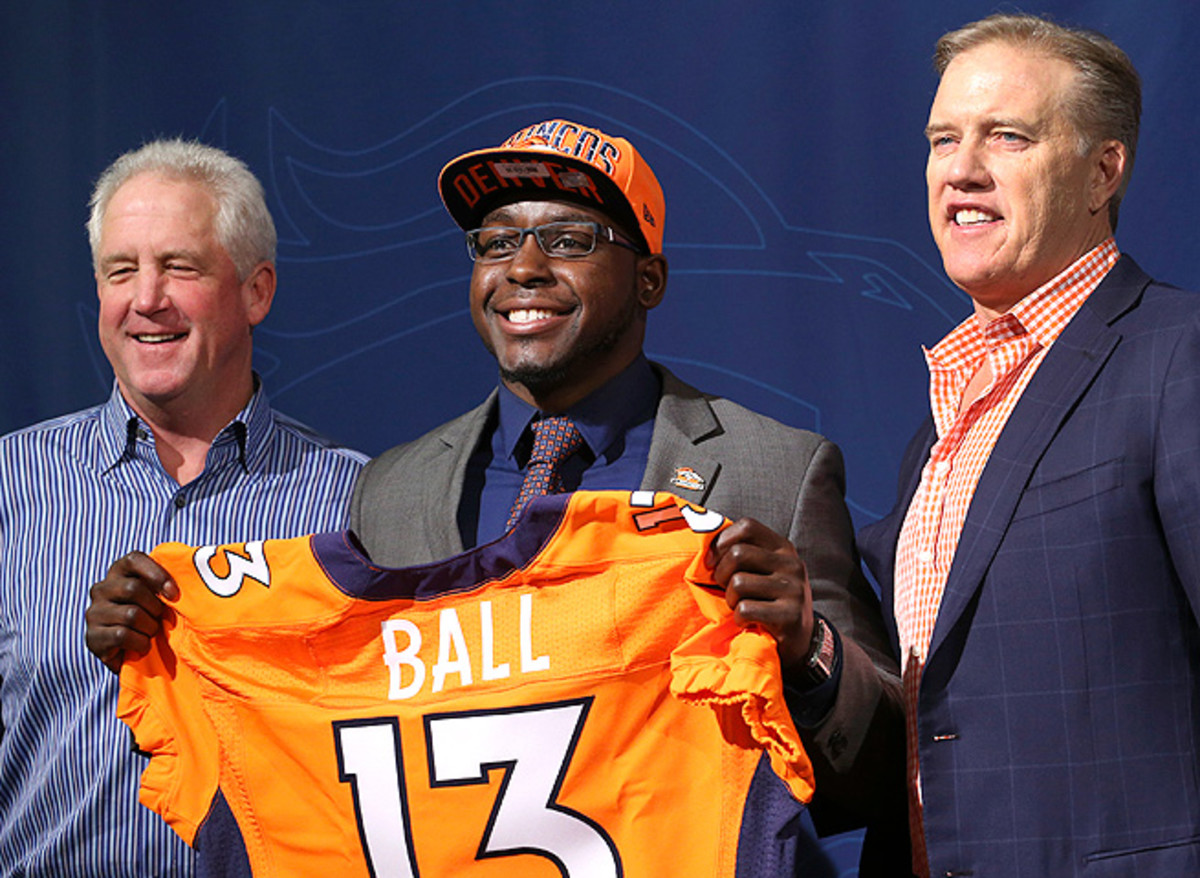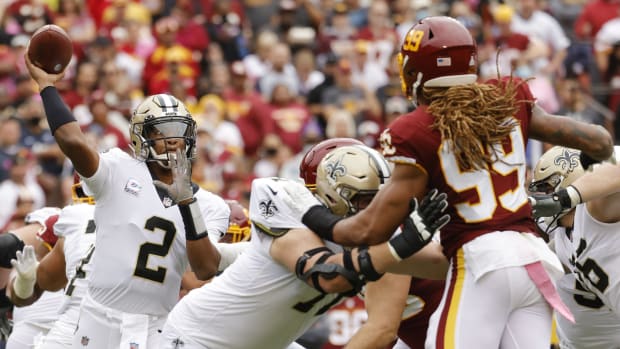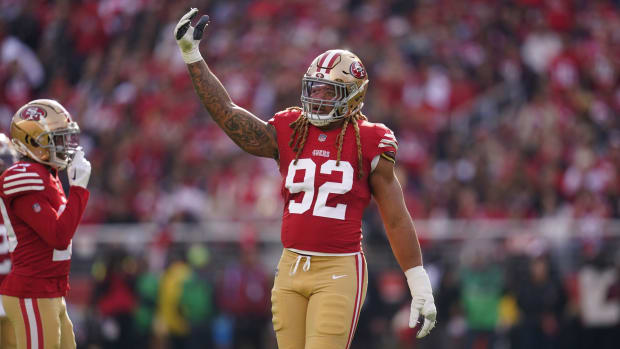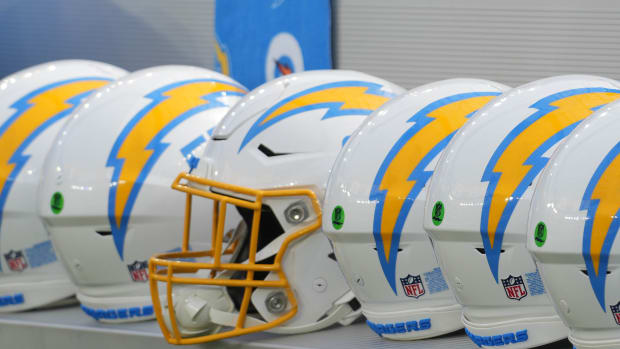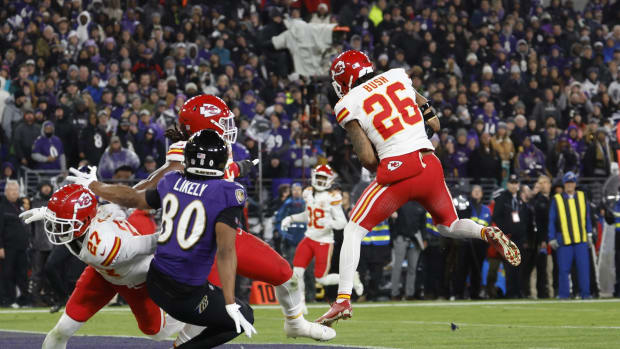Montee Ball leads post-draft fantasy football rookie rankings

Running back Montee Ball will likely play a significant role in the Denver running game this season.
Ed Andrieski/AP
After watching hours of NFL draft coverage (on two networks), reading countless scouting sites, poring over combine data, staring at stats, agonizing, holding inner debates and launching web news searches, I finally found a 2013 rookie worth drafting as a fantasy starter. And he is all alone.
Welcome to hypesville, Montee Ball. Now, don't go messing this up.
After two legendary years of fantasy football rookies, this draft class feels light on impact starters. But in a way, that's an opportunity: The less widely regarded a prospect is, the more likely he is to be a late-round value steal in your draft. So study up.
Here are my early picks for the top five fantasy football rookies to target on draft day:
1. RB Montee Ball, Denver Broncos
It always has to be a running back, right? That's where the fantasy football bread is buttered.
Ball was the third running back picked in the draft last weekend, going in the second round, but he's entering arguably the best situation. The Broncos, thanks to VP of Football Operations John Elway, carefully mapped out the roles of their backs recently:
? Willis McGahee, who is 31 and coming off an MCL tear and a broken leg: "Our big back right now," Elway told the Denver Post. But not the starter. ? Ronnie Hillman, who fell flat as a rookie in fantasy last year: "Change of pace type guy," Elway said. Merely a situational reserve. ? Knowshon Moreno, who replaced McGahee and starred down the stretch before succumbing to his own knee injury: "..." Um, what was that? "..." Exactly. ? Montee Ball, who set the NCAA record for touchdowns with 83: "A three-down guy for us," Broncos/eacd672f-3dcf-49e9-9c50-24b1fcb2370d" target="_blank">Elway said.
It's settled, then: Ball should top the Broncos' running back depth chart right way. We already know that Peyton Manning throwing to Demaryuis Thomas, Eric Decker and Wes Welker is going to raise hell in the passing game. But the running back is going to benefit from John Fox, who likes to play physical football.
The only problem with Ball is that McGahee may steal the goal line carries as the "big back." Still, we should rank the Broncos' second-round pick as the first rookie taken in drafts, say, as the No. 24 running back.
Mostly because of the Denver offense, we rank him ahead of the following projected veteran starters:
? Lamar Miller, Miami Dolphins ? Vick Ballard, Indianapolis Colts ? Rashard Mendenhall, Arizona Cardinals ? Jonathan Stewart, Carolina Panthers ? Mark Ingram, New Orleans Saints ? Chris Ivory, New York Jets ? Jonathan Dwyer, Pittsburgh Steelers ? Daryl Richardson/Isaiah Pead, St. Louis Rams
Early projections for Ball: 225 carries for 950 yards (4.2 average), eight touchdowns
2. RB Eddie Lacy, Green Bay Packers
Lacy, who went into the draft as the top-rated back by many scouts, slipped into the second round -- along with all of the backs for the first time since 1963. Lacy was the fourth back selected, three picks after the Broncos picked Ball.
Elway so conveniently broke down why he chose Wisconsin's Ball over Alabama's Lacy: "It really came down to the medical side and that's what tilted the scales to Montee. They are both great backs, both very productive backs."
Lacy, who reportedly needed his toe fused and has dealt with hamstring issues, should start for the Packers going into training camp. He needs to beat out the mediocre likes of DuJuan Harris, Alex Green and James Starks -- the latter of whom reportedly went on the trade block during the draft.
Here are the reasons we cannot list Lacy ahead of Ball right now:
? The Packers' running game is non-existent. ? They have a lot of backs to choose from and might go with a veteran because pass protection is king in the Packers' offense. ? Alabama had three offensive lineman drafted (two in the top 11), so Lacy very well might be a product of the system. ? On a related note: Lacy's Crimson Tide predecessors Mark Ingram and Trent Richardson were more highly rated coming out of the draft and they didn't manage to average 4.0 yards per carry. ? The health questions.
Early projections for Lacy: 200 carries for 775 yards (3.9 average), seven TDs
3. RB Le'Veon Bell, Pittsburgh Steelers
Bell appears to be the ideal mix between Ball's and Lacy's situations. He is talented, fits a physical running game system perfectly and will likely start. Our problem with Bell lies with that last point.
Because Bell is just 20 years old and left college a year early, he is a bit more raw and more of a long-term project. Ball and Lacy are both two years older.
Yes, Bell's size is a perfect fit for the Steelers, who want to pound the football in the physical AFC North, but being physical at age 20 or 21 is a lot different than at ages 28 (Isaac Redman) or 24 (Jonathan Dwyer).
Bell is this year's David Wilson, another early draft entrant: a potentially great pick who can get the early cold-shoulder treatment behind veterans on a contending team. Bell needs to be a tick behind those top two.
Early projections for Bell: 175 carries for 700 yards (4.0 average), five TDs
4. WR Tavon Austin, St. Louis Rams
Austin was the first skill-position player to come off the draft board at eighth overall to the Rams, but he's not like a Calvin Johnson or A.J. Green. He is a slot receiver, as opposed to a big and strong outside threat, at least initially, and that position requires some time and polish. Ask Wes Welker and Victor Cruz, two players of similar stature.
The Rams still project to start Chris Givens and Brian Quick on the outside, so Austin will be Bradford's inside and option-route target. It can get Austin a lot of receptions and yards after the catch, but he doesn't project to be a instant hit in the touchdown category. Also, Bradford still has some proving to do as a distributor.
Austin is the No. 1 rookie wide receiver to target. He ranks just outside of the top 40 wide receivers and slightly ahead of San Diego's Keenan Allen and the Texans' DeAndre Hopkins. Austin's ranking, though, is more of a function of his big-play potential and targets than of his likely touchdowns. Allen and Hopkins are in better offenses and can start right away on the outside.
Early projections for Austin: 67 catches, 800 yards and four TDs
5. RB Giovani Bernard, Cincinnati Bengals
And finally, we come to the first running back selected (37th overall). Unlike the trio above, Bernard is a bit undersized for a feature back, at 5-foot-9, 202 pounds. This is not to say a back that size cannot be a star, but the Bengals play in a "big back" division.
BenJarvus Green-Ellis will likely be the starter out of training camp, but the Bengals may use Bernard to mix things up and an injury to BGE would push Bernard into the top role. Bernard might be this year's Lamar Miller: a 21-year-old who came out as a sophomore and has to bide his time.
Early projections for Bernard: 740 total yards and five total TDs
Early post-draft rookies by position
We will have plenty of time to dissect this class more fully in the coming weeks, but here is an early ranking by position for 2013 fantasy value:
Quarterbacks
1. E.J. Manuel, Buffalo Bills 2. Geno Smith, New York Jets 3. Matt Barkley, Philadelphia Eagles 4. Mike Glennon, Tampa Bay Buccaneers 5. Landry Jones, Pittsburgh Steelers 6. Tyler Wilson, Oakland Raiders 7. Tyler Bray, Kansas City Chiefs (undrafted) 8. Ryan Griffin, Houston Texans 9. Ryan Nassib, New York Giants 10. Zac Dysert, Denver Broncos
Running backs
1. Montee Ball, Denver Broncos 2. Eddie Lacy, Green Bay Packers 3. Le'Veon Bell, Pittsburgh Steelers 4. Giovani Bernard, Cincinnati Bengals 5. Johnathan Franklin, Green Bay Packers 6. Stepfan Taylor, Arizona Cardinals 7. Joseph Randle, Dallas Cowboys 8. Knile Davis, Kansas City Chiefs 9. Zac Stacy, St. Louis Rams 10. Andre Ellington, Arizona Cardinals
Not ranked: Marcus Lattimore, San Francisco 49ers">49ers (expected to spend the year on the PUP list)
Wide receivers
1. Tavon Austin, St. Louis Rams 2. Keenan Allen, San Diego Chargers 3. DeAndre Hopkins, Houston Texans 4. Cordarrelle Patterson, Minnesota Vikings 5. Aaron Dobson, New England Patriots 6. Robert Woods, Buffalo Bills 7. Justin Hunter, Tennessee Titans 8. Stedman Bailey, St. Louis Rams 9. Josh Boyce, New England Patriots 10. Markus Wheaton, Pittsburgh Steelers 11. Quinton Patton, San Francisco 49ers 12. Terrance Williams, Dallas Cowboys 13. Marquise Goodwin, Buffalo Bills 14. Ace Sanders, Jacksonville Jaguars 15. Kenny Stills, New Orleans Saints
Honorable mention: Da'Rick Rogers, Buffalo Bills (undrafted free agent who slipped due to off-field issues)
Tight ends
1. Tyler Eifert, Cincinnati Bengals 2. Zach Ertz, Philadelphia Eagles 3. Jordan Reed, Washington Redskins 4. Travis Kelce, Kansas City Chiefs 5. Nick Kasa, Oakland Raiders 6. Mychal Rivera, Oakland Raiders 7. Vance McDonald, San Francisco 49ers 8. Gavin Escobar, Dallas Cowboys 9. Levine Toilolo, Atlanta Falcons 10. Dion Sims, Miami Dolphins
Kickers
1. Caleb Sturgis, Miami Dolphins 2. Dustin Hopkins, Buffalo Bills
































